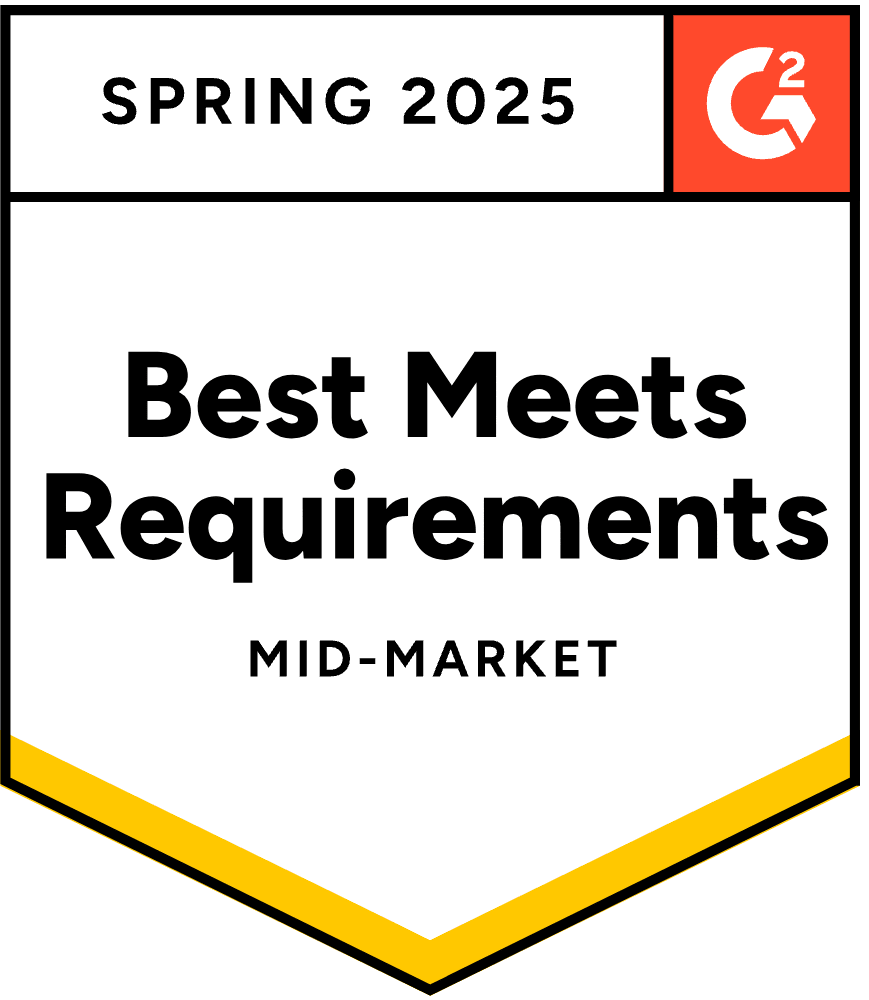- Blog
- How to Grow Your Ecommerce Business in 2025: 12 Proven Strategies
How to Grow Your Ecommerce Business in 2025: 12 Proven Strategies
-
Barbara Bartucz
- Ecommerce
- 6 min read
Table of Contents
Traffic is expensive. Margins are tight. And most tactics that once worked…don’t anymore.
The ecommerce playbook is evolving fast. Whether you’re scaling or just trying to build a successful ecommerce business, relying on one or two channels isn’t enough in 2025.
Here are 12 strategies that real brands are using right now to grow smarter, convert better, and build long-term success—without burning through budget or chasing trends for their online store.
Let’s dive in!
How to grow your ecommerce business: 12 tips
Tried, tested, and ready to scale—here are 12 strategies driving real growth in 2025 for your online business.
1. Diversify your traffic sources
If your ecommerce traffic is 90% Meta Ads, you’re sitting on a ticking time bomb.
Why? Because ad costs fluctuate and algorithms can flip the script overnight. To protect your revenue, build a portfolio of traffic sources. Think of it like investing—don’t put all your eggs in the Google Ads basket.
Try different traffic sources, like using SEO and blog content to build long-term organic traffic.
Tap into affiliate marketing programs to expand reach with minimal risk.
Partner with influencers who actually align with your brand.
This way, even if ad performance tanks, your store stays standing.
2. Build your email list with popups
Email is the quiet workhorse of ecommerce. It’s not flashy, but it delivers—boasting an average ROI of $42 for every $1 spent.
But great email marketing starts with a solid list. And popups are still one of the most effective ways to collect emails—when done right.
Email list building via popups can be potent, but only when done right.
If you have a bold proposal or incentive (discount, exclusive content, etc.) when visitors first land on the site it’s an absolute no-brainer for them to opt-in. Through trial and error, I have learned that timing and message are real kingmakers.

Ben Richardson
Director at Acuity Training
Not sure where to start? Choose from 300+ ready-to-use templates and launch a high-converting popup in just five minutes. Whether you’re offering free shipping, a discount, or promoting an ebook, there’s a template that fits your store and your goals.
3. Boost your brand with trusted influencers
86% of people buy something because of an influencer recommendation each year. That’s huge.
But here’s the thing: Not all influencers are equal. You don’t need a Kardashian. You need someone who gets your target audience.
Take Goop, for example. Beyond Gwyneth, they partner with wellness influencers who align with their luxe, clean-living vibe. It’s aspirational, but still accessible—and it works.
Micro-influencers can drive hyper-targeted traffic and conversions with more authenticity than big names.
Recommended reading: How Goop transformed the wellness space
4. Build a strong content marketing engine
Content isn’t just for ranking—it’s for building trust, keeping visitors coming back, and turning them into loyal customers without paying for every click.
Consider Glossier, for example: they started as a blog before selling a single product.
Today, content is still central to their growth strategy—think beauty tutorials, product reviews, expert interviews, and tips that feel more like a magazine than a sales pitch.

To build your content engine, create SEO-friendly blog posts, helpful how-to guides, and short-form videos that speak to your audience.
Add in real customer stories and curated gift guides to keep it engaging. It’s a long-term play—but the payoff grows over time.
5. Tailor product offerings for your audience
You can’t sell protein bars to skincare enthusiasts—unless they’re protein bars for glowing skin.
Take Alani Nu. Their product range—energy drinks, supplements, protein snacks—is laser-focused on health-conscious women. The branding, ingredients, and even flavor names speak their language.
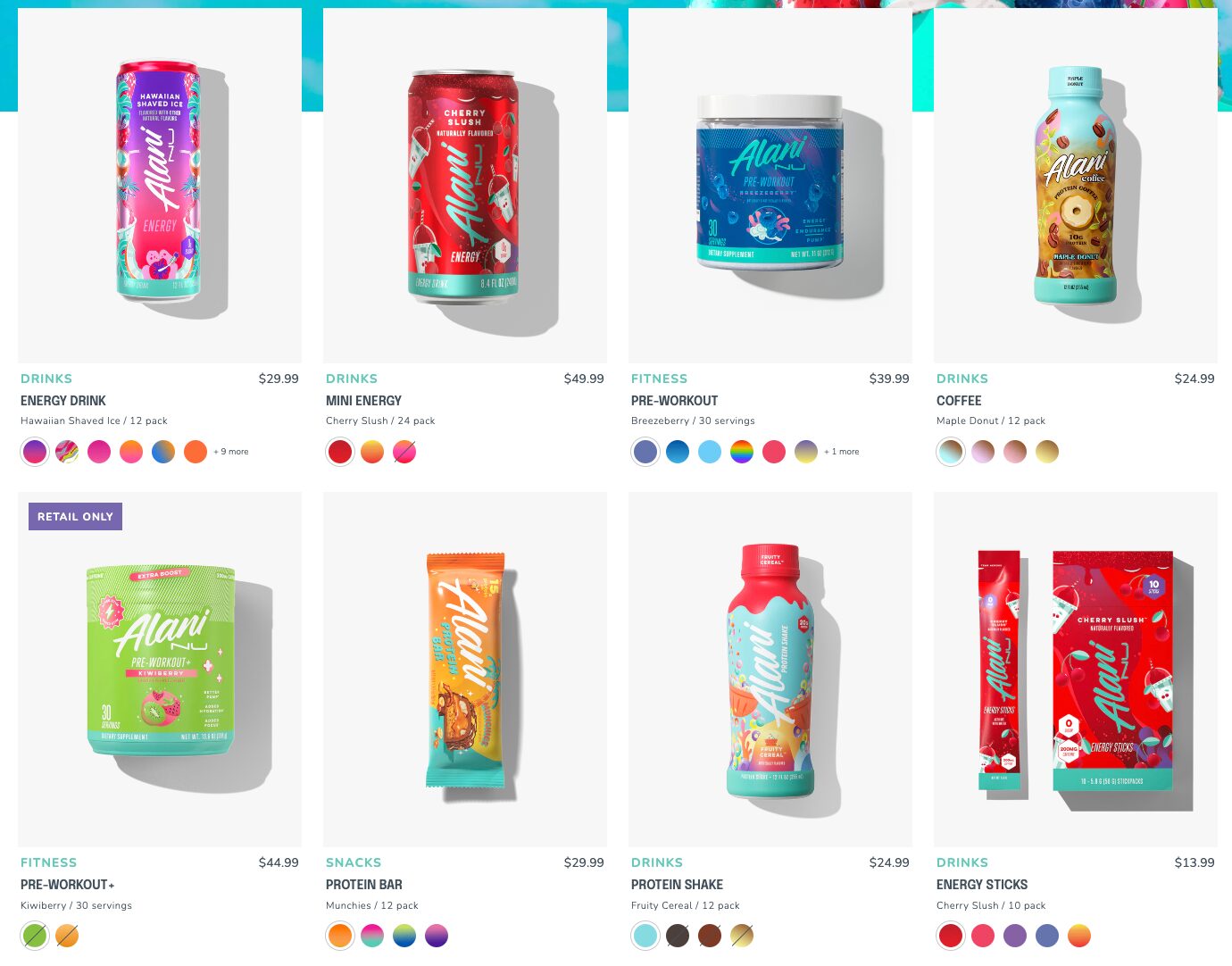
Know your audience. Survey them. Read reviews. Then, develop products or bundles that speak directly to their needs.
Recommended reading: How Alani Nu built a $3 billion brand
6. Launch limited-time promotions with urgency
Want to light a fire under your customers? Use urgency and scarcity. These psychological triggers nudge shoppers who are thinking about buying into actually buying.
Here’s what works:
- Flash sales with countdown timers
- Limited-stock seasonal collections
- Waitlists for restocks
OptiMonk’s countdown timer popups can help you create that “act now” moment—without making your site feel like a used car lot.
7. Build a community
Transactions are one-and-done. Communities stick around.
Lululemon’s story is a masterclass in exactly this. They don’t just sell leggings—they build belonging. From in-person events to highly curated Instagram content featuring real customers, their brand is a lifestyle.

To build your own community, spotlight real customers, create spaces for connection like a private group or Discord, host events that bring people together, and encourage user-generated content that feels authentic and relatable.
8. Retarget across multiple channels
Most shoppers won’t convert the first time they visit your site. In fact, it typically takes 5–8 interactions before they’re ready to buy. That’s why retargeting is a must-have in your ecommerce strategy.
Effective retargeting means showing up consistently across platforms your audience actually uses—Facebook, Instagram, Google Display, TikTok, and follow-ups via email or SMS.
This multi-touch approach helps you stay top-of-mind, rebuild interest, and bring shoppers back to complete their purchase.
Done right, it can significantly reduce cart abandonment and increase overall conversion rates.
9. A/B test your offers
A/B testing is essential for understanding which offers resonate most with your audience.
Whether it’s a percentage discount, a mystery deal, or free shipping, testing helps you identify which incentive leads to more conversions.
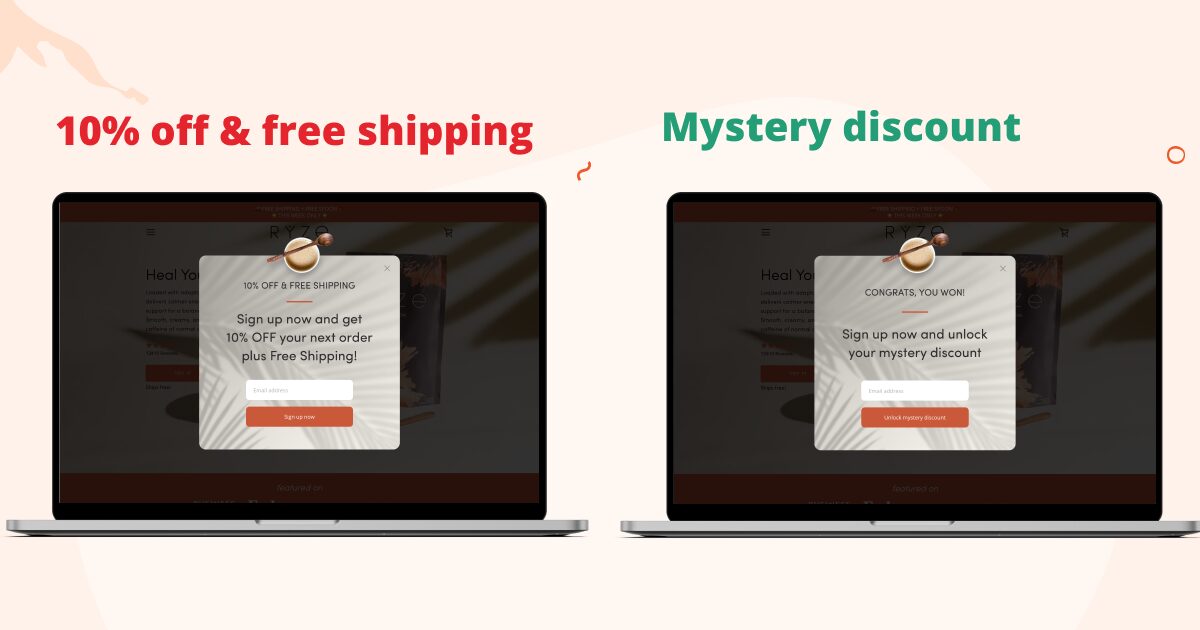
The key is to test different options and adapt based on what drives the best results for your store.
10. Improve site speed and performance
You could have the best product on the planet, but if your site loads slowly, it’s game over. A 1-second delay in load time can cut conversions by up to 7%, and that adds up fast.
To speed things up, compress and lazy-load your images, cut unnecessary third-party scripts, and use a content delivery network (CDN). If you’re serious about performance, consider headless ecommerce for a lightning-fast user experience.
Fast-loading sites don’t just convert better—they also rank higher in search.
11. Optimize for mobile conversions
Over 70% of ecommerce traffic now comes from mobile devices, yet conversion rates still trail behind desktop. That gap isn’t going to close on its own.
To fix it, make mobile your priority, not an afterthought. Use larger, thumb-friendly buttons, streamline the checkout experience, test mobile popups separately from desktop versions, and make sure your product images load quickly and clearly.
Check out this example from Rare Beauty—with tappable buttons and bold, eye-catching images, it makes the mobile experience super engaging and easy to navigate.
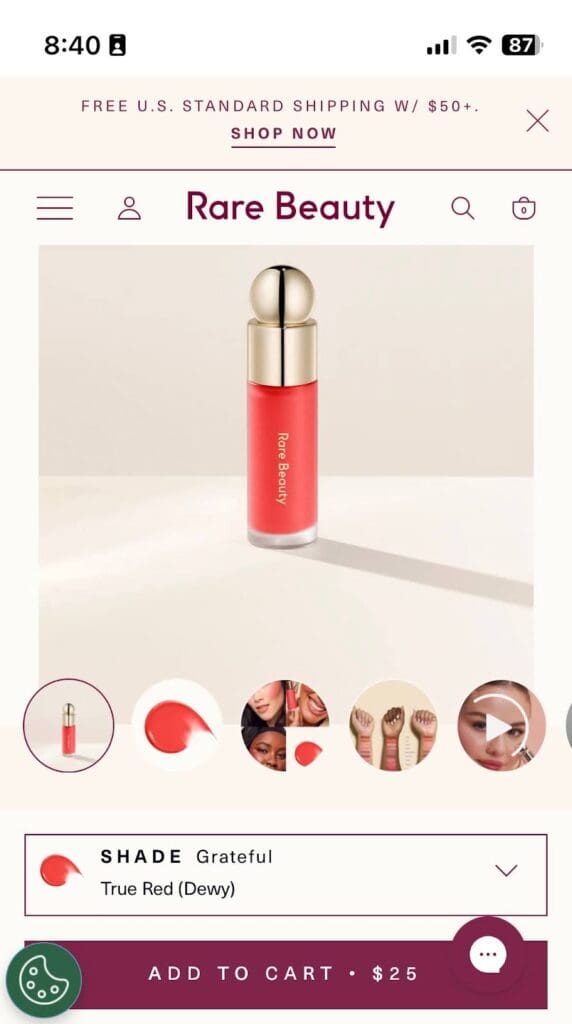
If your site isn’t optimized for mobile, you’re losing sales daily—plain and simple.
12. Implement loyalty & referral programs
Bringing in new customers is costly. Keeping the ones you already have (and turning them into advocates) delivers more value in the long run.
Take Loop, for example. Their “Loop Circle” loyalty program rewards members through fun challenges and referrals.
Users can earn credits, unlock new perks, and enjoy bonuses like birthday gifts, free shipping, and even free earplugs.

To get started, offer points for repeat purchases and create simple referral incentives, like a discount for both the referrer and their friend.
Promote your program across your website and in post-purchase emails to keep it top of mind.
Loyal customers spend more, come back more often, and bring others with them—driving organic growth without extra ad spend.
Recommended reading: How Loop changed the ear protection industry
FAQ
How can I improve my ecommerce store’s conversion rates?
Improving your ecommerce store’s conversion rates starts with optimizing the user experience. Simplify your website navigation, make product pages engaging, ensure a smooth checkout process, and focus on search engine optimization.
Listening to customer feedback can also provide insights into potential improvements, helping you enhance the overall customer experience and increase customer loyalty.
What is the best business model for an ecommerce website?
The best business model for your ecommerce website depends on your target market and product offerings. Popular models include B2C (business-to-consumer), subscription-based, and marketplace models.
It’s essential to align your business model with the needs of your audience to drive growth.
How do I use customer feedback to grow my ecommerce brand?
Customer feedback is a goldmine for improving your ecommerce store. Use surveys, reviews, and direct interactions to gather insights on what’s working and what isn’t. Incorporating this feedback into your store’s design, product offerings, and customer service can significantly enhance the customer experience and boost sales.
Final thoughts
The key takeaway here? Start small, track your results, and continuously improve. The ecommerce landscape is all about adapting and evolving, so don’t hesitate to test and iterate as you optimize your approach.
By consistently applying these strategies, you’ll be well on your way to real ecommerce success in 2025.
Migration has never been easier
We made switching a no-brainer with our free, white-glove onboarding service so you can get started in the blink of an eye.
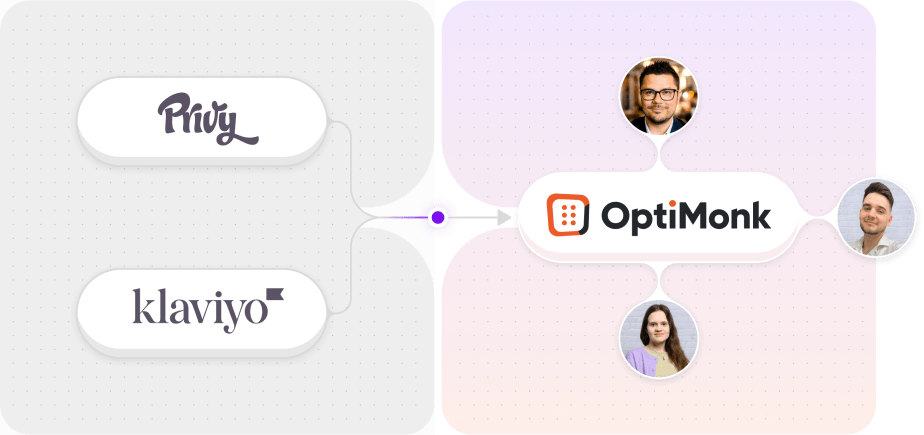
What should you do next?
Thanks for reading till the end. Here are 4 ways we can help you grow your business:
Boost conversions with proven use cases
Explore our Use Case Library, filled with actionable personalization examples and step-by-step guides to unlock your website's full potential. Check out Use Case Library
Create a free OptiMonk account
Create a free OptiMonk account and easily get started with popups and conversion rate optimization. Get OptiMonk free
Get advice from a CRO expert
Schedule a personalized discovery call with one of our experts to explore how OptiMonk can help you grow your business. Book a demo
Join our weekly newsletter
Real CRO insights & marketing tips. No fluff. Straight to your inbox. Subscribe now
Barbara Bartucz
- Posted in
- Ecommerce
Partner with us
- © OptiMonk. All rights reserved!
- Terms of Use
- Privacy Policy
- Cookie Policy
Product updates: January Release 2025


